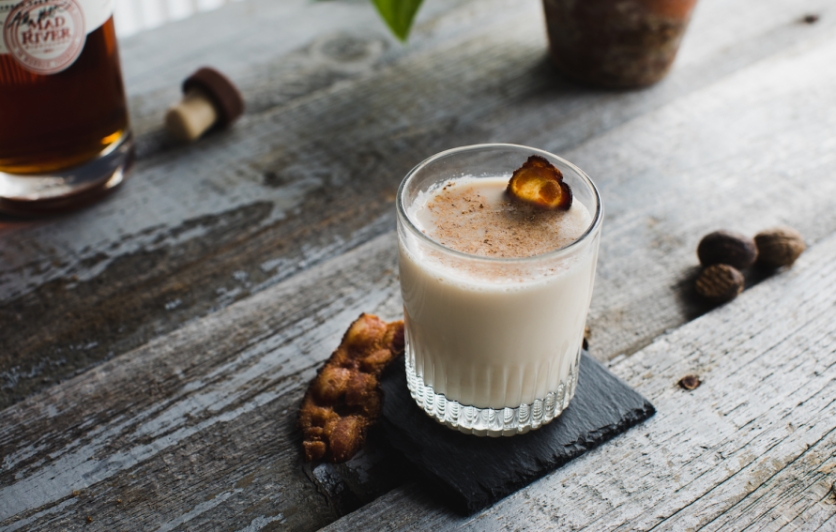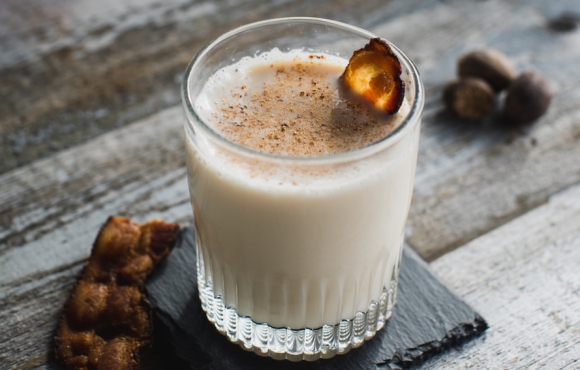Milk Punch

After 150 years, milk punch is back! Milk punch is a milk-based beverage that commonly uses brandy or bourbon as an ingredient, although other spirits may be substituted. Sugar and vanilla extract are added along with a dusting of spice, usually nutmeg. This drink can be served hot or cold.
It is thought that milk punch was first created in the 1600s, reaching the peak of its popularity in the 1700s through mid-1800s. Its mass appeal was attributed to Aphra Behn, a 17th-century English writer, who mentioned the punch in one of her plays and was thought to be its creator. The earliest written record of this drink was found in a 1711 cookbook by Mary Rockett. Many famous people were known to be fond of this smooth-tasting libation. Ben Franklin created his own recipe for milk punch and enclosed it in a letter to one of his acquaintances in 1763. His was a rather strong creation, which today’s mixologists have softened, using only a select number of Franklin’s ingredients.
Because it was a bottled drink with a long shelf life, milk punch was very much in demand and reached the height of favor in the middle of the 18th century. Part of the drink’s appeal was the fact that it could be made with any spirit, juice or tea. Queen Victoria loved the beverage so much that she employed a special company to supply the royal family with the drink.
There are two kinds of milk punch. The first called bourbon, or brandy, milk punch was very popular in New Orleans in the 18th century. This punch includes milk and spirits. The second type is called English milk punch, or clarified milk punch. In this creation, the milk is usually hot when added to a mixed cocktail, which curdles the milk. Th e punch is then strained through cheesecloth to remove the curds. Th is process removes most of the color and cloudiness from the drink and clarifies it. If the punch is kept cool, it can be preserved for months or even years. It is said that bottles of milk punch were found in Charles Dickens’s wine cellar after he died in 1870.
Now that milk punch has returned to popularity, bartenders are putting their own spin on the drink. The key to successful dairy cocktails and punch is the freshness of the milk. Be sure to keep an eye on the milk’s expiration date, and remember that the drink is best when served immediately after mixing. Using the milk in your refrigerator is fine, but with a bit of tweaking, rice, almond and soy milk can be used. Bartenders like to work with different types of milk including half-and-half and cream. Versatility is the name of the game.
The fact that milk punch can be made in advance, does not spoil if handled properly and is easy to serve makes this drink very popular. Garnish with your favorite fruit: lemons, limes, pineapple, apples and mangoes are a few that pair well with spices such as cinnamon stick, nutmeg, ginger or cloves. Tailor your creation to suit the occasion and serve hot or cold. If warming the milk, heat gently—just until steaming. Milk that is too hot will curdle and may burn your mouth. Matching your glass temperature to the drink proves helpful.
This creative punch represents both the past and the future. Our ancestors drank it in Colonial times, in big cities and small towns, and now we are doing the same. Remember that there are no hard-and-fast rules for its preparation, so experiment. Surprise your guests with a taste of history, or better yet, create your own!






